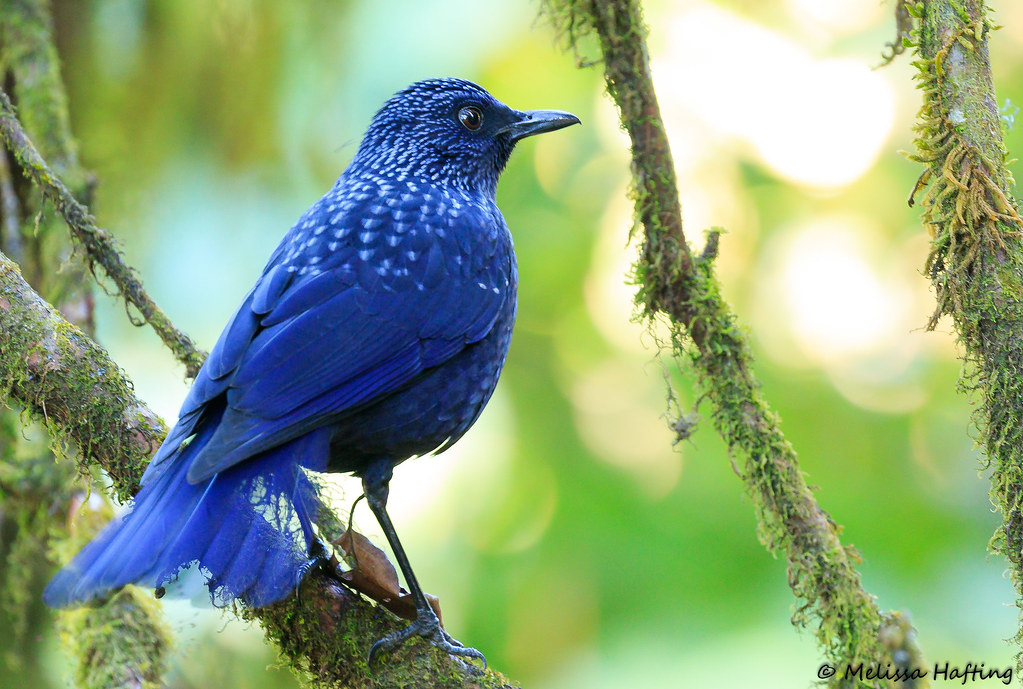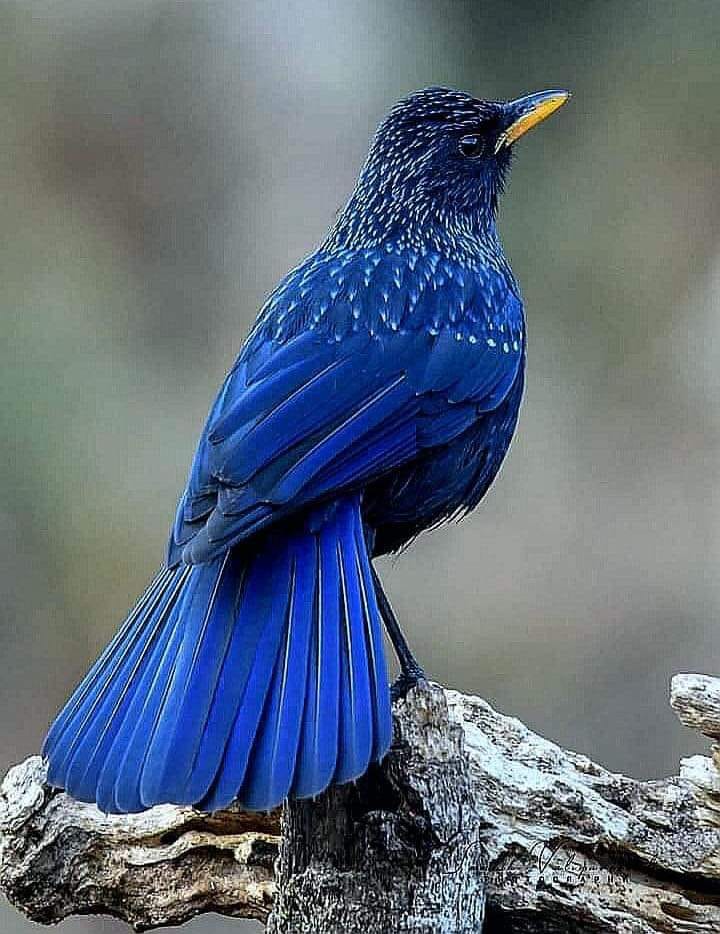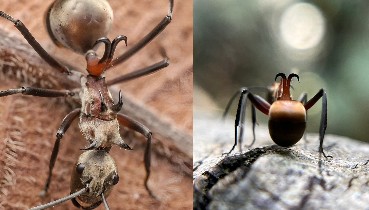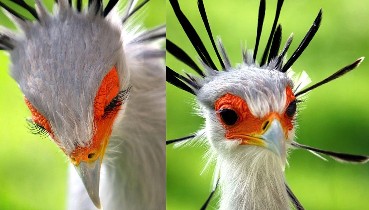
Amazing Nature
30 March 2022 ( 327 views )

Advertisements
The blue whistling thrush (Myophonus caeruleus)
The blue whistling thrush (Myophonus caeruleus) is a whistling thrush that is found in the mountains of Central Asia, South Asia, China and Southeast Asia. It is known for its loud human-like whistling song at dawn and dusk. The widely distributed populations show variations in size and plumage with several of them considered as subspecies. Like others in the genus, they feed on the ground, often along streams and in damp places foraging for snails, crabs, fruits and insects.

This whistling thrush is dark violet blue with shiny spangling on the tips of the body feathers other than on the lores, abdomen and under the tail. The wing coverts are a slightly different shade of blue and the median coverts have white spots at their tips. The bill is yellow and stands in contrast. The inner webs of the flight and tail feathers is black. The sexes are similar in plumage.

It measures 31–35 cm (12–14 in) in length. Weight across the subspecies can range from 136 to 231 g (4.8 to 8.1 oz). For comparison, the blue whistling thrush commonly weighs twice as much as an American robin. This species is possibly the largest extant thrush though size overlap does occur with the similar by length great thrush and the insular Amami thrush, whose mean body mass falls around the middle of those of the whistling thrush. Among standard measurements, the wing chord can measure 15.5–20 cm (6.1–7.9 in) long, the tarsus is 4.5–5.5 cm (1.8–2.2 in) and the bill is 2.9–4.6 cm (1.1–1.8 in).[6] Size varies across the range with larger thrushes found to the north of the species range and slightly smaller ones to the south, corresponding with Bergmann's rule. In northern China, males and females average 188 g (6.6 oz) and 171 g (6.0 oz), whereas in India they average 167.5 g (5.91 oz) and 158.5 g (5.59 oz).

Several populations are given subspecies status. The nominate form with a black bill is found in central and eastern China. The population in Afghanistan, turkestanicus, is often included in the widespread temminckii which has a smaller bill width at the base and is found along the Himalayas east to northern Burma. The population eugenei, which lacks white spots on the median coverts, is found south into Thailand. Cambodia and the Malay peninsula have crassirostris, while dichrorhynchus with smaller spangles occurs further south and in Sumatra. The Javan population, flavirostris, has the thickest bill.The subspecies status of several populations has been questioned.

The blue whistling thrush is usually found singly or in pairs. They hop on rocks and move about in quick spurts. They turn over leaves and small stones, cocking their head and checking for movements of prey.When alarmed they spread and droop their tail. They are active well after dusk and during the breeding season (April to August) they tend to sing during the darkness of dawn and dusk when few other birds are calling. The call precedes sunrise the most during November.The alarm call is a shrill kree. The nest is a cup of moss and roots placed in a ledge or hollow beside a stream. The usual clutch consists of 3 to 4 eggs, the pair sometimes raising a second brood. They feed on fruits, earthworms, insects, crabs and snails. Snails and crabs are typically battered on a rock before feeding. In captivity, they have been known to kill and eat mice and in the wild have been recorded preying on small birds.

Recommended Videos
 Wildlife Photographer Captures A Rare Yellow Penguin272 views
Wildlife Photographer Captures A Rare Yellow Penguin272 views Fishhook Ants Are Capable of Cutting Through Skin and Getting Lodged Into the Throat of Would-Be Predators170 views
Fishhook Ants Are Capable of Cutting Through Skin and Getting Lodged Into the Throat of Would-Be Predators170 views-
Advertisements
 Andean People Already Perfected Skull Surgery Thousands of Years Ago227 views
Andean People Already Perfected Skull Surgery Thousands of Years Ago227 views Russian Artist ‘Grows’ Mini Paper Flowers That Will ‘Bloom Forever’ (60 Pics)1382 views
Russian Artist ‘Grows’ Mini Paper Flowers That Will ‘Bloom Forever’ (60 Pics)1382 views 20 of The Most Awkward Beach Moments Ever Captured3353 views
20 of The Most Awkward Beach Moments Ever Captured3353 views Photographs That Show Indigenous Beauty Of A Unique Kenyan Tribe599 views
Photographs That Show Indigenous Beauty Of A Unique Kenyan Tribe599 views Amazing images capture young barn owl enjoying a run to strengthen its muscles before taking flight112 views
Amazing images capture young barn owl enjoying a run to strengthen its muscles before taking flight112 views 10 Times Dresses Looked So Bad4122 views
10 Times Dresses Looked So Bad4122 views
Advertisements



